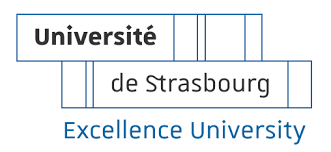Revisiting Recommended BGP Route Flap Damping Configurations
Authors: Clemens Mosig, Randy Bush, Cristel Pelsser, Thomas C. Schmidt, Matthias Wählisch
In: Proc. of IEEE/IFIP Network Traffic Measurement and Analysis Conference (TMA) 2021
Abstract: BGP Route Flap Damping (RFD) is recommended to suppress BGP churn. Current configuration recommendations for RFD, however, are based on a study from 2010. Since then, BGP churn increased by one order of magnitude, which may lead to outdated RFD parameters and introduce more loss of reachability of stable networks. In this paper, we revisit current recommendations to configure RFD. First, we develop an accurate and scalable emulation of Cisco and Juniper RFD implementations and make it publicly available. Second, we successfully reproduce the 2010 measurement study that justified the current RFD recommendations using current data. Third, we consider the RFD implementation of an additional major router vendor (Juniper), which penalizes BGP churn differently compared to the previously studied Cisco implementation. Fourth, we include IPv6~data from 2020. Our results show that the recommended RFD configuration parameters from 2010, though seemingly rarely used, still hold today in IPv4 and IPv6 and across vendors, even though BGP churn increased significantly. Our study revises metrics to assess the impact of incorrectly configured RFD, discusses collateral damage, and gives insights into sweet spots when damping routes.
Contact: clemens.mosig@fu-berlin.de
@inproceedings{mbpsw-rcbrf-21,
author = {Clemens Mosig and Randy Bush and Cristel Pelsser and Thomas C. Schmidt and Matthias W{\"a}hlisch},
title = {{Revisiting Recommended BGP Route Flap Damping Configurations}},
booktitle = {Proc. of Network Traffic Measurement and Analysis Conference (TMA)},
year = {2021},
doi = {10.1145/3419394.3423624},
publisher = {IFIP}
}
BGP Beacons, Network Tomography, and Bayesian Computation to Locate Route Flap Damping
Authors: Caitlin Gray, Clemens Mosig, Randy Bush, Cristel Pelsser, Matthew Roughan, Thomas C. Schmidt, Matthias Wählisch
In: Proc. of ACM Internet Measurement Conference (IMC) 2020
Abstract: Pinpointing autonomous systems which deploy specific inter-domain techniques such as Route Flap Damping (RFD) or Route Origin Validation (ROV) remains a challenge today. Previous approaches to detect per-AS behavior often relied on heuristics derived from passive and active measurements. Those heuristics, however, often lacked accuracy or imposed tight restrictions on the measurement methods. We introduce an algorithmic framework for network tomography, BeCAUSe, which implements Bayesian Computation for Autonomous Systems. Using our original combination of active probing and stochastic simulation, we present the first study to expose the deployment of RFD. In contrast to the expectation of the Internet community, we find that at least 10% of measured ASs enable RFD, most using deprecated vendor default configuration parameters. To illustrate the power of computational Bayesian methods we compare BeCAUSe with three RFD heuristics. Thereafter we successfully apply a generalization of the Bayesian method to a second challenge, measuring deployment of ROV.
Contact: caitlin.gray@student.adelaide.edu.au and clemens.mosig@fu-berlin.de
@inproceedings{gmbpr-bbntb-20,
author = {Caitlin Gray and Clemens Mosig and Randy Bush and Cristel Pelsser and
Matthew Roughan and Thomas C. Schmidt and Matthias W{\"a}hlisch},
title = {{BGP Beacons, Network Tomography, and Bayesian Computation to Locate Route Flap Damping}},
booktitle = {Proc. of ACM Internet Measurement Conference (IMC)},
year = {2020},
publisher = {ACM},
address = {New York},
}





